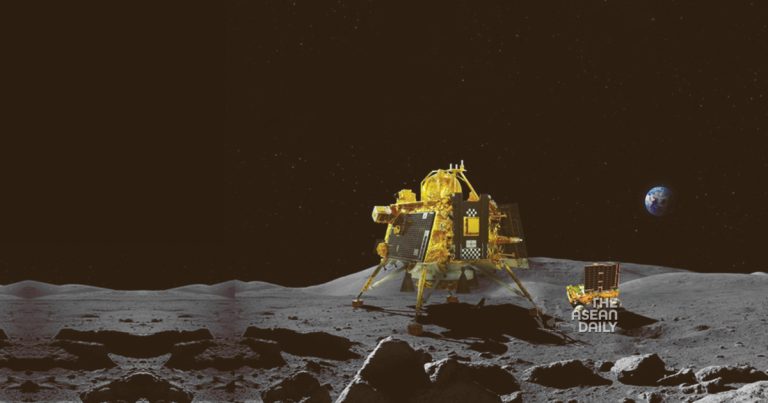24-8-2023 (NEW DELHI) India has taken a giant leap in lunar exploration as its rover, named “Pragyan,” meaning “Wisdom” in Sanskrit, rolled out of the lander, marking the beginning of its exploration of the Moon’s surface. This significant development occurred just a day after India achieved the historic milestone of becoming the first nation to successfully land a spacecraft near the largely uncharted lunar south pole.
The Indian Space Research Organisation (ISRO) announced this remarkable progress with a tweet on its X account, formerly known as Twitter: “Rover ramped down the lander and India took a walk on the moon!”
The six-wheeled, solar-powered rover is equipped to navigate and explore the relatively uncharted lunar region. Over its two-week operational lifespan, it will capture images and collect crucial scientific data.
This achievement follows closely on the heels of a Russian lander’s crash in the same lunar region, underscoring the complexities and challenges of lunar missions.
India’s journey to this point has not been without setbacks. Four years ago, the country faced a significant setback when its previous lunar mission failed during the final descent. However, India has been steadily advancing its space programme and is now matching the achievements of established spacefaring nations.
The Chandrayaan-3 mission, often referred to as “Mooncraft-3,” has captured the imagination of the Indian public since its launch nearly six weeks ago. The mission has received fervent support, with politicians conducting Hindu prayer rituals to bless its success, and schoolchildren closely following its descent through live broadcasts in classrooms.
Prime Minister Narendra Modi hailed the successful lunar landing as a triumph for “all of humanity.” India’s achievement in landing on the Moon is a feat previously accomplished only by the United States, Russia, and China.
Even Elon Musk, the CEO of SpaceX and a prominent figure in the commercial space industry, praised the landing as “super cool.”
Chandrayaan-3’s journey to the Moon took longer than the Apollo missions of the 1960s and 1970s, primarily due to its launch on a less powerful rocket, requiring multiple Earth orbits to gain sufficient speed for the month-long lunar journey.
India has been able to maintain a low-cost space programme, with Chandrayaan-3’s cost estimated at US$74.6 million, significantly lower than missions conducted by other nations. This cost-efficiency is a testament to India’s ability to adapt and repurpose existing technology, as well as its pool of highly skilled engineers who earn a fraction of their foreign counterparts’ wages.
India’s space programme has been on an upward trajectory since it first sent a probe to orbit the Moon in 2008. The nation successfully placed a craft into Mars’ orbit in 2014 and plans to launch a probe toward the sun in September. ISRO’s future plans include a crewed mission into Earth’s orbit by next year, a joint lunar mission with Japan in 2025, and an orbital mission to Venus within the next two years.
Chandrayaan-3 Mission:
Updates:The communication link is established between the Ch-3 Lander and MOX-ISTRAC, Bengaluru.
Here are the images from the Lander Horizontal Velocity Camera taken during the descent. #Chandrayaan_3#Ch3 pic.twitter.com/ctjpxZmbom
— ISRO (@isro) August 23, 2023




